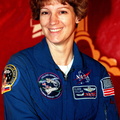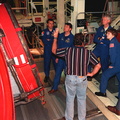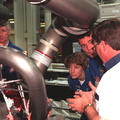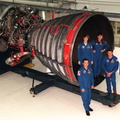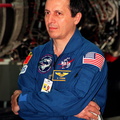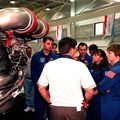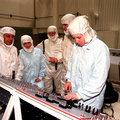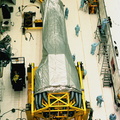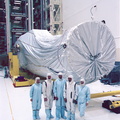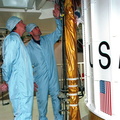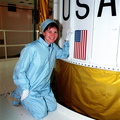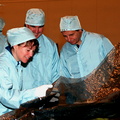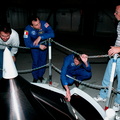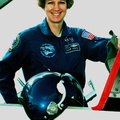
WIKIARCHIVES.SPACE
The Human Spaceflight Archive

Information
- Taken in
- Kennedy Space Center
- Author
- NASA
- Description
- In the Solid Motor Assembly Building, Cape Canaveral Air Station, looking over the Inertial Upper Stage booster being readied for their mission are (left to right) STS-93 Pilot Jeffrey S. Ashby and Mission Specialists Michel Tognini, who represents the Centre National d'Etudes Spatiales (CNES), and Steven A. Hawley. On the far right is Eric Herrburger, with Boeing. Other crew members (not shown) are Commander Eileen Collins and Mission Specialist Catherine G. Coleman. STS-93, scheduled to launch July 9 aboard Space Shuttle Columbia, has the primary mission of the deployment of the Chandra X-ray Observatory. Formerly called the Advanced X- ray Astrophysics Facility, Chandra comprises three major elements: the spacecraft, the science instrument module (SIM), and the world's most powerful X-ray telescope. Chandra will allow scientists from around the world to see previously invisible black holes and high-temperature gas clouds, giving the observatory the potential to rewrite the books on the structure and evolution of our universe.
- Created on
- Tuesday 9 February 1999
- Source link
- https://science.ksc.nasa.gov/gallery/photos/1999/
- Visits
- 46
- Rating score
- no rate
- Rate this photo
- License
- CC BY-NC-ND
- Modified by WikiArchives
- No (original)
- Downloads
- 0
Powered by Piwigo
